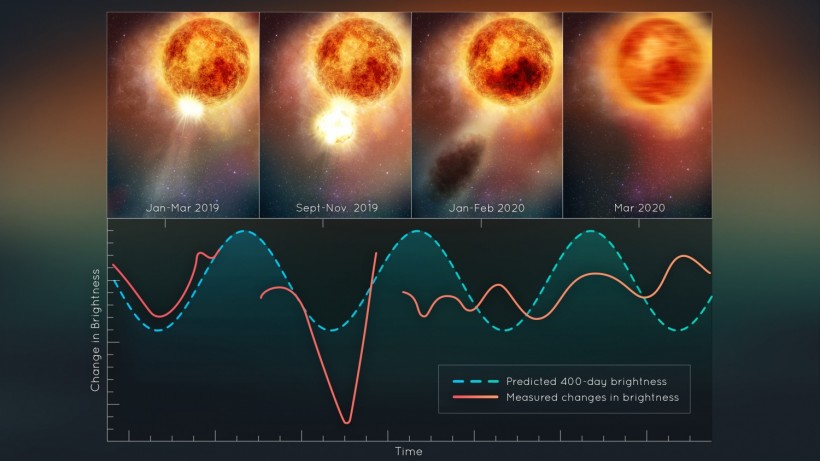Astronomers are also keeping an eye on the supergiant star Betelgeuse, which blasted part of itself in 2019 and is now acting strangely. According to observations from NASA Hubble Space Telescope and numerous other telescopes, the explosion in 2019 caused Betelguese to lose a significant portion of its visible surface. It is currently generating a massive Surface Mass Ejection (SME).
The Coronal Mass Ejection (CME), in which our sun periodically rips out portions of its outer atmosphere known as the corona, is comparable to the SME. The explosion on Betelguese, however, blasted out 400 billion times as much mass as a normal CME, which is the main distinction.
Supergiant star Betelgeuse (Betelgeuse, Betelgeuse) blew off a huge chunk of surface material in 2019, data from @NASAHubble data shows. Astronomers have never seen anything like it, though it's not evidence the star will burst anytime soon: https://t.co/RhuWwWxQxr pic.twitter.com/01ek8hRdSb
— NASA (@NASA) August 11, 2022
NASA, Astronomers Say Betelguese Is Recovering From Explosion
NASA, citing Andrea Dupree of the Center for Astrophysics, mentioned that giant superstar Betelguese is still regaining its vitality after the big explosion, with Betelgeuse's interior "bouncing."
These new results provide insight into how red stars age and lose mass, eventually exploding as supernovae when the fuel for their nuclear fusion furnaces runs out. Their fate is significantly influenced by the degree of mass loss.
Dupree assembles all the numerous facets of the star's past odd behavior before, after, and during its eruption to produce a coherent narrative of a previously unseen gigantic convulsion in an ancient star.
The Tillinghast Reflector Echelle Spectrograph at the Fred L. Whipple Observatory, the Solar Terrestrial Relations Observatory spacecraft (STEREO-A), the STELLA robotic observatory, and the American Association of Variable Star Observers have all contributed new spectroscopic and imaging data (AAVSO).

This illustration plots changes in the brightness of the red supergiant star Betelgeuse, following the titanic mass ejection of a large piece of its visible surface. The escaping material cooled to form a cloud of dust that temporarily made the star look dimmer, as seen from Earth. This unprecedented stellar convulsion disrupted the monster star’s 400-day-long oscillation period that astronomers had measured for more than 200 years. The interior may now be jiggling like a plate of gelatin dessert.
ALSO READ: Himawari-8 Satellite Observes Dimming of Betelgeuse: What's Happening to the Supergiant Star?
"We've never before seen a huge mass ejection of the surface of a star. We are left with something going on that we don't completely understand," said Dupree in the NASA statement.
Dupree noted the brand-new phenomena that they can see up close and in detail using Hubble. The researcher continued that experts are keeping an eye on the development of stars in real-time.
History of 2019 Betelguese Explosion
The 2019 Betelgeuse explosion, according to astronomers (per Republic World), bubbled up from the star's interior, causing shocks and pulsations that blew a piece of the photosphere off (the visible upper layer).
As a result, Betelguese had a sizable cool surface area beneath the dust cloud that the cooling portion of the photosphere had created. It's interesting to note that the broken chunk of the photosphere, eventually flew out into space and created a dust cloud that obscured the observatories' views.
Although the fate of stars is affected by such enormous explosions and the mass lost in the process, scientists are convinced that this is not always an indication of an impending explosion. In terms of Betelguese, it wouldn't likely blow up again anytime soon either.
RELATED ARTICLE: Betelgeuse's Great Dimming: Did a Dark Star-Spot Cause the Supergiant Star's Temperature Drop?
Check out more news and information on Space in Science Times.














